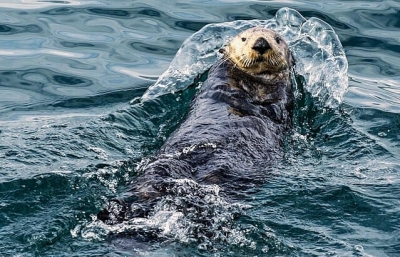
Keystone species play a unique and crucial role in the functioning of an ecosystem. The animals and organisms that come under this category help to maintain biodiversity within their community either by controlling populations of other species that would otherwise dominate the community or by providing critical resources for the survival of a wide range of organisms.
These species act as the glue that holds the system together. The term was coined by Dr Robert Paine in 1969, to describe the power a single species exerts on an ecosystem. Examples of keystone species include starfish, sea otters, beavers, wolves, elephants, prairiedogs and bees.
Keystone Species Examples
Sea Otter
The sea otter (shown below) is considered a keystone species as their consumption of sea urchins, preventing the destruction of kelp forests caused by the sea urchin population. Kelp forests are a critical habitat for many species in nearshore ecosystems. In the absence of sea otters, sea urchins feed on the nearshore kelp forests, thereby disrupting these nearshore ecosystems. However, when sea otters are present, their consumption of sea urchins restricts the sea urchin population to smaller organisms confined to protective crevices. Thus, the sea otter protects the kelp forests by reducing the local sea urchin population.
Large Mammalian Predators
While small predators are important keystone species in many ecosystems, as mentioned above, large mammalian predators are also considered keystone species in larger ecosystems. For example, the lion, jaguar (shown below), and gray wolf are considered keystone species as they help balance large ecosystems (e.g., Central and South American rainforests) by consuming a wide variety of prey species.
Sea Star
Sea stars (shown below) are another commonly recognized keystone species as they consume mussels in areas without natural predators. In many cases, when the sea star is removed from an ecosystem, the population of mussels proliferates uncontrollably, and negatively effects the resources available to other species within the ecosystem.
Credit : Biology dictionary
Picture Credit : Google



